Victoria Bill, the founding Manager of the NYU Tandon School of Engineering MakerSpace Lab, understands just how essential 3D printing is as a tool for students to have at their fingertips. She says, “3D printing has tremendous potential to pull people in, as it allows your work to come to life in front of you, and encourages you to think outside the box.” When her team set out to equip their space, they knew that the right tools and 3D printers would facilitate such growth for students of all majors.

Empowering student innovation at the NYU Tandon School of Engineering
The NYU Tandon School of Engineering is more than just a resource for students who want to learn about the technology of today and tomorrow. Bustling with additive manufacturing tools like Ultimaker 3D printers, CNC machines, laser cutters, and imaging equipment, NYU Tandon was designed to inspire and prepare students to be motivated and self-sufficient when tackling science and engineering endeavors that benefit the world around them.
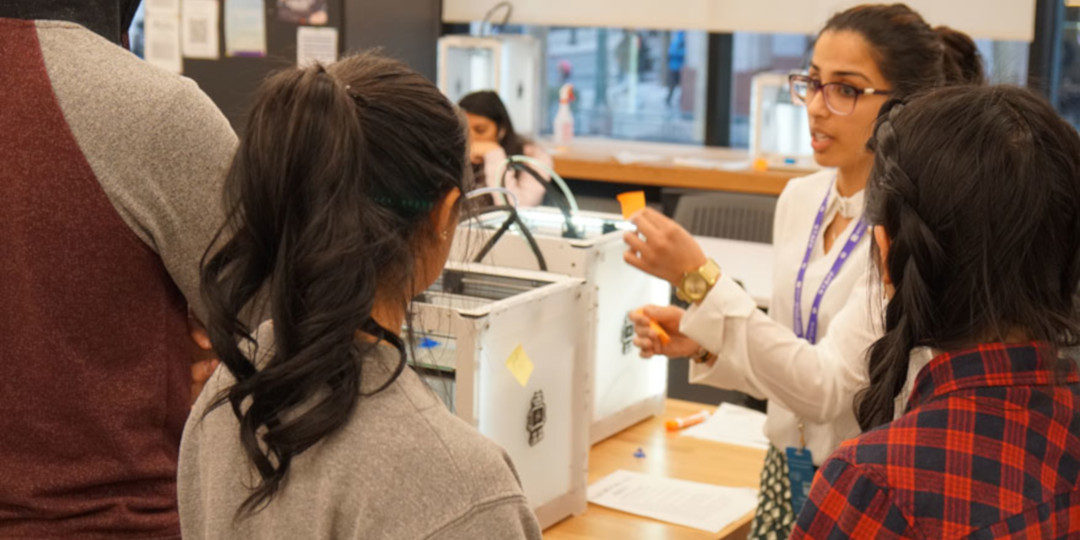
A bustling lab built for the future
To date, the lab has 14 Ultimaker printers that are used almost around the clock, with the majority running 20 to 24 hours a day. University students, staff, and faculty from 18 different schools across NYU visit the Lab, including students from the Shanghai and Abu Dhabi campuses. As a welcoming environment that encourages ingenuity and fosters creativity, students tackle projects that make a difference in the lives of others, such as 3D printed orthotics and assistive devices.
Gabriella Cammarata, a recent graduate of the Integrated Digital Media Master's program at NYU, is part of an ongoing orthopedics project that is a collaboration between the MakerSpace Lab and NYU Langone Medical Center, and The NYU Ability Project – which connects designers, engineers, and artists with those who have limited mobility.
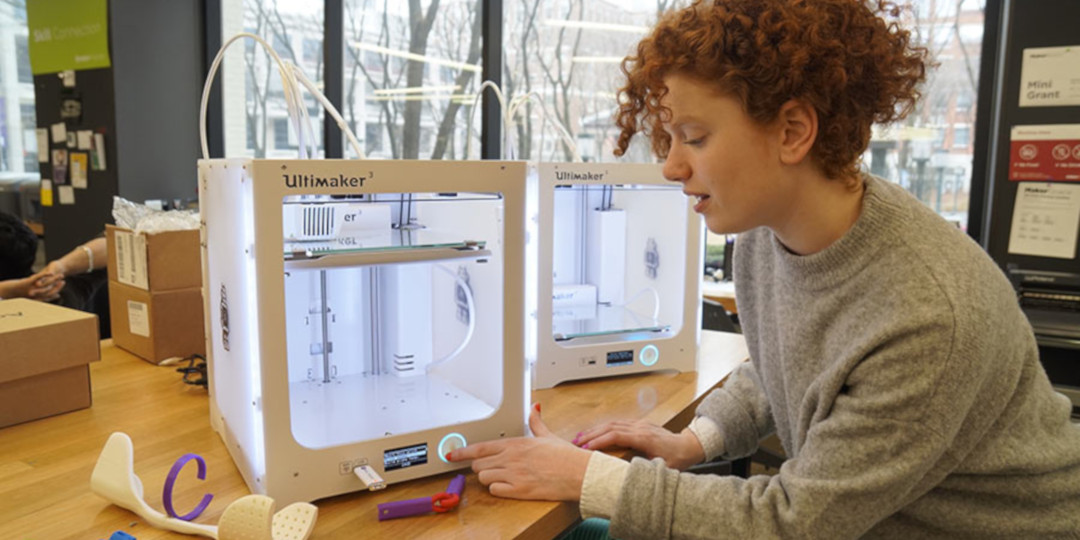
The project was started by Dr. Alice Chu, an Associate Professor in the Department of Orthopaedic Surgery at the NYU School of Medicine. Dr. Chu wanted to explore ways to build low-cost 3D printed orthotic braces for children with cerebral palsy. These braces could serve as therapy devices to exercise hand and arm muscles, as well as allow children to gain additional mobility or function in their affected hands.
As devices such as arm and hand exoskeletons are too expensive for the average family, Gabriella and her fellow students committed to creating low-cost orthotics and biomedical devices under the guidance of Dr. Chu. “Children require regular fittings for entirely new orthotics or prosthetics as they grow, which means most insurance companies will not cover the expensive costs of orthotics,” Gabriella says.
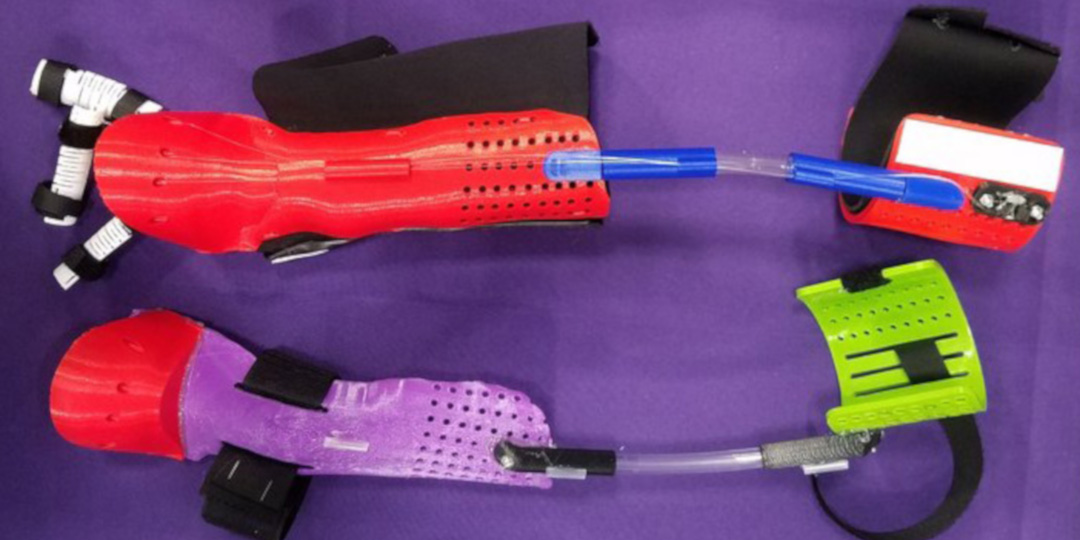
“The aim is to design and fabricate these devices using Ultimaker 3D printers so that parents, doctors, and occupational therapists can reproduce them as necessary.” Helping those in need through innovative projects at NYU Tandon teaches students valuable lessons about the ways these tools can be used to better the lives of others, while also sharpening additive manufacturings skills they will need in the future.
Pioneering projects with the help of 3D printing
NYU Tandon continues to offer diverse options for research endeavors, like the Vertically Integrated Projects (VIP). Initially established by Georgia Tech, the VIP program is currently implemented in over 28 universities worldwide—including NYU—and allows students to gain course credit towards their degree by working on a project. Victoria transformed the orthotic brace project into a VIP course so that it could be a long-term, sustainable research project which students could participate in for multiple semesters. Students are encouraged to count their work towards their required engineering credits for graduation while also building up a project portfolio.
Translating the project into a course also allows for older, more advanced students to mentor and lead new students who join the research and project team.
The goal of their specific VIP team is to design and create customized, low-cost 3D printed orthotic braces for children with degenerative muscular disorders like cerebral palsy. Offered as a course at NYU, students from a mix of disciplines come together for three semesters to develop devices that act as therapy tools and facilitate increased hand functionality.
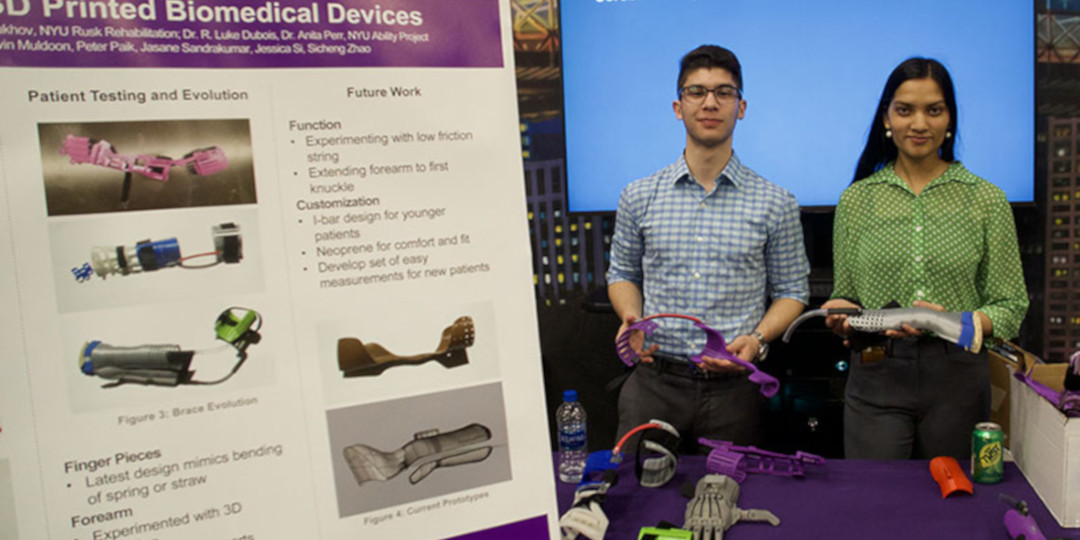
In addition to developing assistive and therapeutic devices, student groups work on a variety of projects that fall into the realm of design and engineering. The VIP program at NYU Tandon is also home to the NYU Hyperloop group, which is comprised of 30 students from the NYU and Shanghai campuses. The group was one of 27 out of 700 teams chosen to participate in the 2017 Hyperloop Pod Competition by SpaceX, after which they were allowed test their prototypes on the Hyperloop track in Hawthorne, California.
A synergetic student effort
One of the most impressive aspects of the MakerSpace Lab is that it is almost entirely student-run. Each semester it draws in about 1,500 unique members, which includes 350 first-years eager to delve into 3D printing. “We have four graduate students and 24 undergraduate students who all work with the Ultimaker printers,” Victoria says.
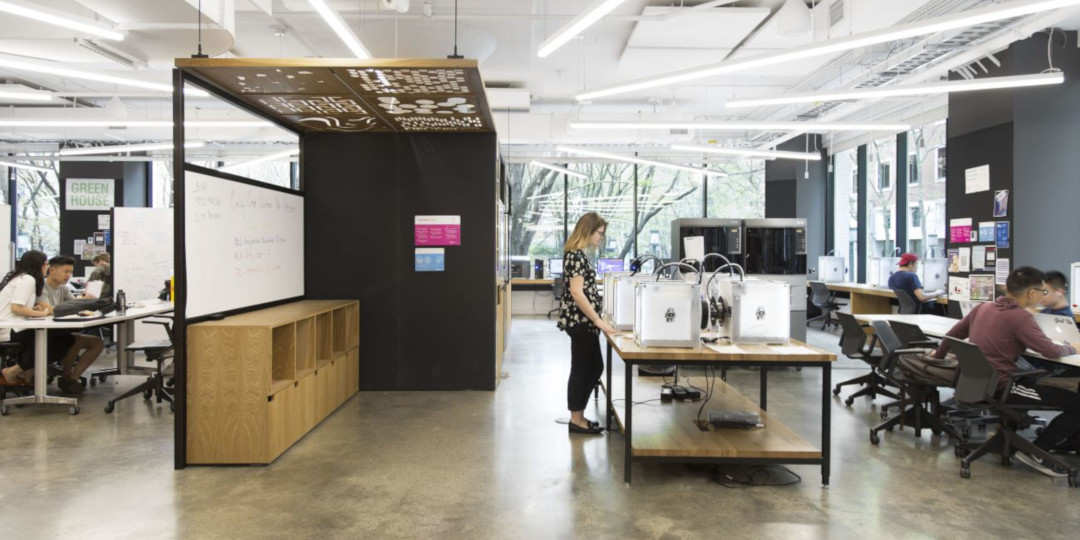
“When students come to the MakerSpace Lab at NYU Tandon they train in groups to ensure that they’re prepared to print, but the user-friendly interface of Ultimaker makes the process easy to pick up.” In the future, Victoria hopes to expand their lineup of Ultimaker 3D printers to continue to offer the latest in innovative additive manufacturing technology, opening new doors for students with ideas that will inspire and help others.
Check out our Explore pages for more stories on 3D printing applications in education!





















